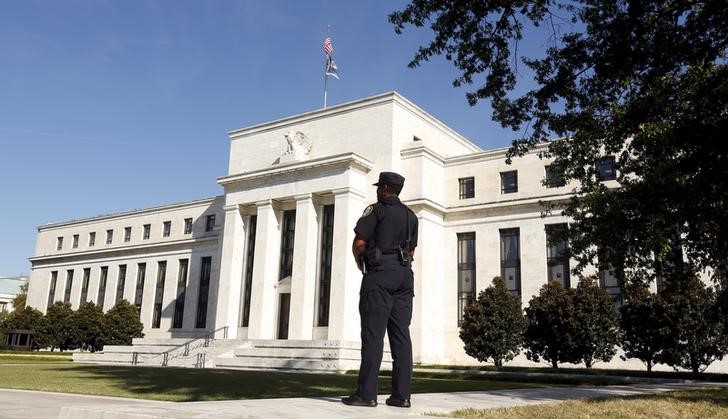(Bloomberg) -- Wall Street is increasingly betting the Federal Reserve may have to cut interest rates again as jitters over the spread of the new coronavirus roil financial markets.
U.S. stocks and interest rates tumbled further Tuesday on worries that the outbreak would take a bigger toll on global growth. And despite the disruption to global supply chains, investors marked down the risk of inflationary pressures emerging, sending breakeven inflation rates derived from the government bond market to the lowest levels in more than three months. Breakeven rates are among the metrics central bankers look at to gauge price expectations.
The downward moves put more pressure on Fed officials, who have already expressed concern about inflation running below their 2% target for too long. Fed Vice Chairman Richard Clarida is set to speak Tuesday at 3 p.m. in Washington, and Fed watchers will be listening closely for any indication of policy makers’ latest thinking about how to manage the risks.
“The market views this as maybe a supply shock in the near term that could be inflationary, but in the longer term it is a risk to aggregate global demand, so is deflationary,” said Roberto Perli, a partner at Cornerstone Macro LLC in Washington and former Fed economist. “This is certainly something that will make a number of committee members uncomfortable and can contribute to the bias toward cutting.”
The central bank’s policy-setting Federal Open Market Committee next meets March 17-18 in Washington. Investors currently don’t see the FOMC cutting rates then, according to federal funds futures contracts, but are putting good odds on rate reductions at each of their next three meetings in April, June and July.
In 2019, the FOMC authorized three quarter-point rate cuts to counter a slowdown in global growth, which was exacerbated by uncertainty surrounding tense trade negotiations between the U.S. and China. Now, with their benchmark closer to zero -- the target range for the federal funds rate is currently 1.5% to 1.75% -- there may be a case for a larger cut if downside risks to the economy keep rising.
Larry Kudlow, the White House’s economic adviser, isn’t expecting policy makers to make any emergency rate cuts as a result of the outbreak.
“I’m not hearing the Fed’s going to make any panic moves,” he said in an interview on CNBC Tuesday. Apart from the virus, “I wouldn’t mind seeing my friends at Fed being a little bolder in their target rate and balance sheet.”
Krishna Guha, vice chairman of Evercore ISI, thinks the debate will come down to whether to do another series of two or three quarter-point cuts, like in 2019, or a half-point cut “upfront.” In either case, there’s a possibility of “more aggressive signaling in terms of readiness to cut sharply further if needed to ward off recessionary dynamics,” he wrote in a Feb. 23 note to clients.
So far, most reports indicate the U.S. economy is holding up in face of the threat, though that could change if uncertainty around the likely course of the outbreak continues to rise.
William Dudley, president of the New York Fed from 2009 to 2018, said in a Bloomberg opinion column published Tuesday that at this point, it won’t take much more to prompt a response from the central bank.
“The greatest risk to the record U.S. economic expansion is an external shock that the Fed can’t offset because it responds either too late or without enough force. This risk is rising,” Dudley said.
“If the situation stays roughly the same or deteriorates further, I would expect Fed officials to take note of the risks in their next Federal Open Market Committee policy statement and for Chair Jerome Powell to make it clear in his press conference that the Fed is alert and prepared to respond forcefully should that prove necessary.”
(Updates with comment from White House economic adviser Larry Kudlow in seventh paragraph.)
